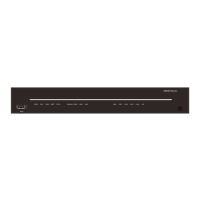NOTICE
l Huawei devices must use Huawei-certified optical modules. Non-Huawei-certified optical
modules cannot ensure transmission reliability and may affect service stability. Huawei is
not responsible for any problem caused by the use of non-Huawei-certified optical
modules and will not fix such problems.
l Do not over bend optical fibers. The bend radius of an optical fiber must be no less than 40
mm.
l Do not bundle optical fibers too tight. Otherwise, transmission performance of optical
fibers may be degraded, affecting communications between devices.
Procedure
Step 1 Gently push an optical module into an optical interface until you hear a click.
NOTE
If the optical module cannot be completely inserted into the optical interface, do not force it into the
interface. Turn the optical module 180 degrees over and try again.
Step 2 Remove the dust plug from the optical module.
NOTE
Place the dust plug in an appropriate place. After optical fibers are removed from the optical module,
cover the optical module with the dust plug to protect it from dust.
Step 3 Before connecting optical fibers, attach temporary labels on both ends of each optical fiber to
identify them. For details on how to make labels of optical fibers, see 6.5.2 Engineering
Labels for Optical Fibers.
Step 4 Remove the dust caps from the fiber connectors. Connect one end of the optical fiber to the
optical module and the other end to the remote device.
NOTE
Connect the receive and transmit ends of the fiber connector according to the identifiers on receive and
transmit bores of the optical module. Do not connect the two ends reversely.
Huawei AR500&AR530&AR550 series Industrial Switch
Routers
Hardware Installation and Maintenance Guide
4 Installing an AR530 Series Industrial Switching Router
Issue 05 (2015-12-01) Huawei Proprietary and Confidential
Copyright © Huawei Technologies Co., Ltd.
75

